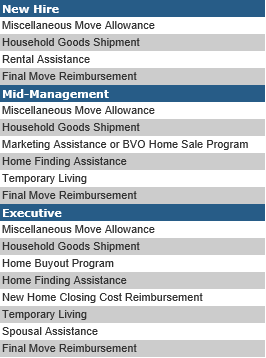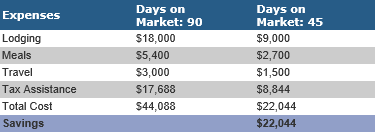
Cost Savings & Relocation Policy Design
While waiting for a colleague to join me in the main exhibit hall at the 2016 SHRM annual conference, I noticed a gentleman a couple of booths down who was conducting an informal participant survey. He was asking routine questions, such as “What is your favorite thing about your job?” and “What do you find most rewarding about your role?” When my friend finally appeared, I asked her, mostly in jest, if she thought anyone ever answered “managing relocation programs for their company.” She looked at me and laughed.

The point of this prelude is to acknowledge that managing a relocation or mobility program is a challenging job. Balancing the competing priorities of developing and maintaining competitive relocation or assignment benefits and containing costs is difficult. With an increase in global economic volatility, most notably the economic crisis in South America, Brexit and the price of crude oil, many CFOs continue to look for ways to cut or contain costs. Human resource leaders will be evaluating their relocation service offerings, attempting to save money without negatively impacting recruiting and talent management initiatives. Policy Design is the first place to look when assessing cost saving opportunities for relocation and mobility programs.
Tiered Relocation Policies
Most companies have adopted a tier-based benefits policy to align services with the appropriate categories of their mobile employee population. This methodology allows a company to segregate service based on variables such as job grade, salary, position, subsidiary, business unit or other factors. A common three-tier approach includes a new hire policy, mid-management policy and executive policy.

Tiered policies are a popular approach to cost control because they allow a program owner to allocate services based on need, competition for new hires and what’s most appropriate for different groups of employees. This often results in fewer benefits for lower level employees, saving the company money. Standardized tiers also assist in keeping relocation benefits fair and equitable within the employee population.
Benefit Utilization
For those programs that are well established, another approach to achieving cost savings is to review which relocation services are actually being utilized. If a service is in policy, meaning anyone authorized for that policy can choose to utilize the service, you have to assume that it will be used and the cost incurred. Some employees may not actually need the service, but will choose to use it anyway because the company is offering to pay for it.
For example, let’s assume a relocation program offers pet transportation. When looking at a service utilization report you notice that only a small portion, say 14% of people associated with that program, used the pet service. After closer examination, it is apparent that a majority of the 14% drove (final reimbursement was move mileage) and also submitted invoices for household pets such as dogs and cats. For your program, pet transportation averaged $900 per pet. Since the cost is proportionally high and the service is underutilized, it may make sense to remove this benefit from the standard offering.
Exception Management
While exceptions, or unplanned costs, should generally be avoided, exception management provides a method of cost control for human resource managers. The appropriate manager can decide if there is truly a need and room within a budget to accommodate each request before approving it.
Policy Design
Finally, when assessing relocation and assignment policies, it is important to understand that there is an inherit relationship between some of the services. While it may seem counterintuitive, adding verbiage and spending a little more on one service, such as a home sale program, may actually save money overall.
Selling a home is personal. When it takes a long time for a property to sell, there is a direct and often negative emotional impact on the employee and their family. Additionally, there is an increase in relocation costs, even if the property isn’t being held in inventory. If you offer a buy-out program, there should be language requiring a mandatory minimum marketing period and a capped list price of no more than 105% of the average of two Broker Market Analysis reports. If the employee lists their property higher than the market can support, the company will find themselves spending more on temporary living and household goods storage. In addition, the employee may experience decreased productivity as a result of making several trips to their departure location to maintain their existing property.

In this example, we show the impact of days-on-market to temporary living expenses.
How the policy language is crafted and offering incentives can help to set the right expectations and lower overall costs. Home sale programs, especially in economically depressed areas, can benefit from a home sale bonus. This benefit encourages employees to list their homes competitively so they can be sold as quickly as possible. While it is an additional cost, it costs less in the end than 45 or 90 days of temporary living, household goods storage, duplicate housing costs and the normal exceptions requests that come in when a home has not sold.

At its core, relocation programs were developed to assist companies with “People Care”. These individuals were identified as experts in their fields and the company is choosing to invest in them. While it can be challenging to balance benefits and costs, good policy development is instrumental to achieving this goal.

